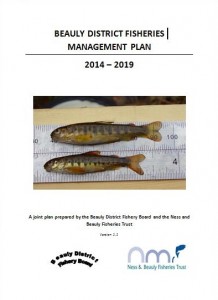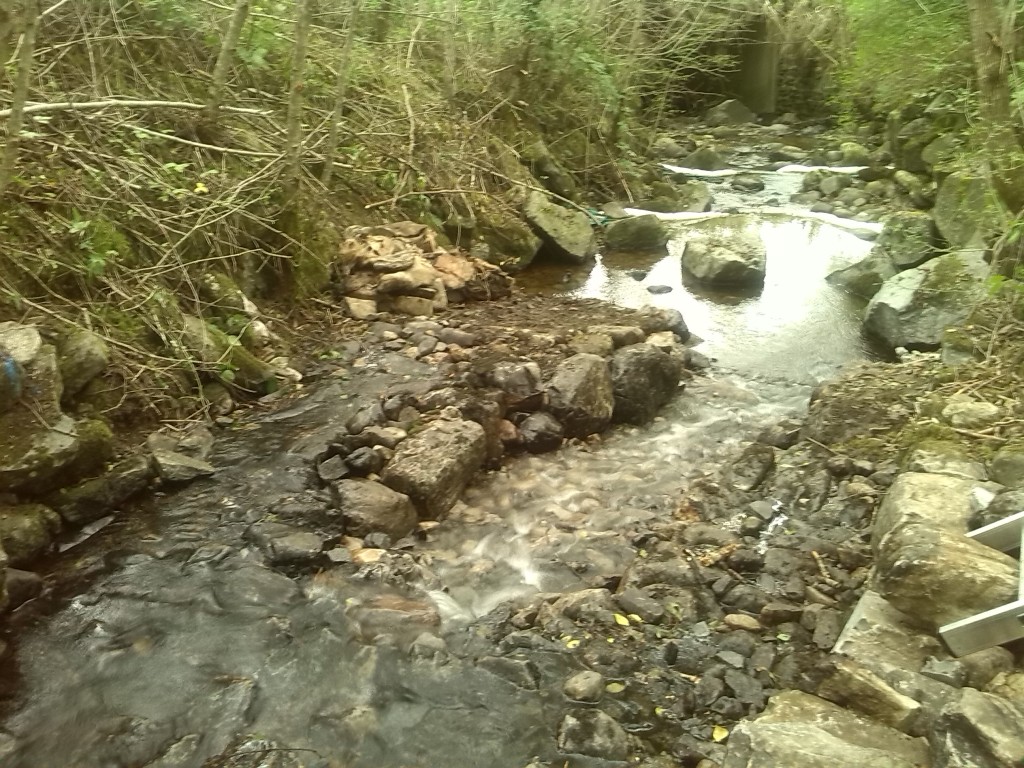Fish populations within the Ness and Beauly Catchments are not only an important and integral feature of its aquatic ecosystems, but they also present a valuable resource in terms of the local economy. Their full ecological value and economic potential can only be achieved and sustained through careful fisheries management.
A 20lb salmon captured by Eric Craig at Ness Side Fishing’s on the 17th August 2014
As such the Ness & Beauly Fisheries Trust and Boards have jointly prepared draft Fisheries Management Plans (FMPs) for each catchment. These were put out to public consultation. We received an excellent response from a range of organisations including the Scottish Environment Protection Agency, Scottish Natural Heritage and the Scottish Coarse Fish Federation. The comments were overwhelmingly positive and included a number of extremely constructive suggestions, which we were able to incorporate into the reports.
The final versions of the FMPs were released in August 2014 and can be viewed on the Publications page of our website. They set out priority actions identified as being required for the management of fish populations within the Ness and Beauly catchment. This provides a framework for the protection and enhancement of such populations and to ensure that their exploitation is undertaken in a sustainable manor.
The Ness and Beauly Fisheries Management Plans 2014 – 2019
The catchments have been sub-divided into smaller management units in order that those pressures and associated actions that are generic across the district or more specific in nature can be defined. The Plan also recognises that fish populations within the catchments are not only an important and integral feature of their aquatic ecosystems, but they also present a valuable resource in terms of the local economy. Their full ecological value and economic potential can only be achieved and sustained through careful fisheries management.
The new fish pass on the Culburnie Bridge Apron completed in September 2014 and funded by SEPA’s Water Environment Fund
The plans relate to all native and naturally occurring fish species with the catchments, with a particular focus on salmon and sea trout populations. Their key components include:
- A description of the current fisheries management structure in the catchment;
- A description of the catchment in terms of topography, geology, climate hydrology and land use;
- The fish and fisheries of the catchment;
- A description of the key factors limiting fish production;
- Proposed management actions for each management unit;
- Routine monitoring requirements;
- An economic development plan for fisheries in the Ness District; and
- Key review periods for the plan.
The lifespan of these plans is six years. Throughout this period the plans will be regularly reviewed and progress reported on. they will be updated as required and kept relevant to current situations and knowledge.



![10625047_765242260202227_7047730822628535356_n[1]](http://www.nessandbeauly.org.uk/wp-content/uploads/2014/10/10625047_765242260202227_7047730822628535356_n1.jpg)


